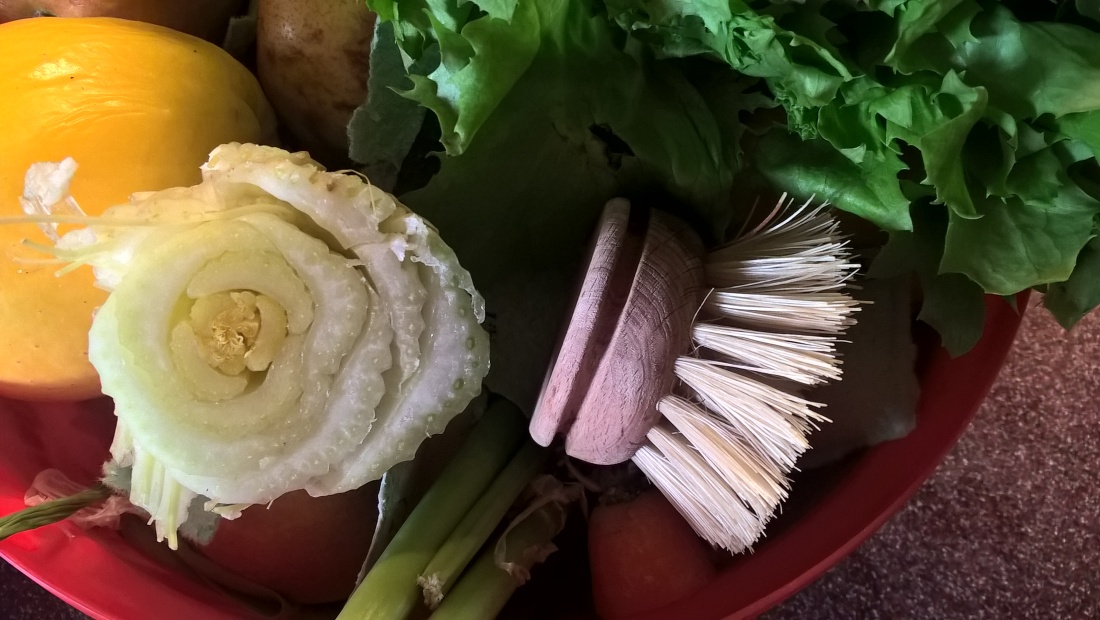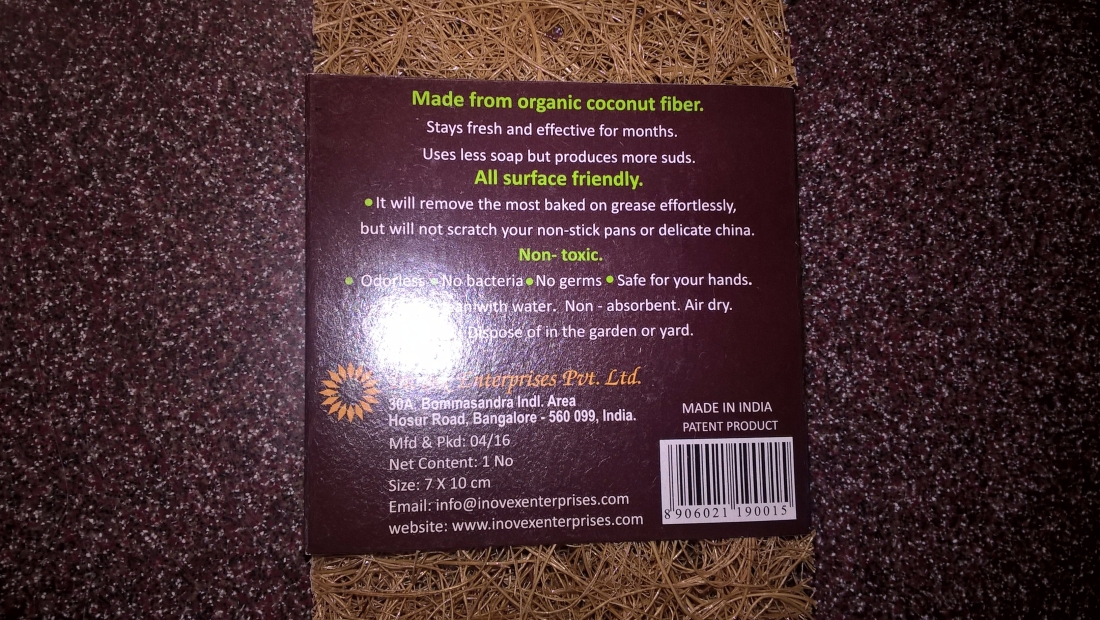This post is about how to swap-in cloths for wipes. Slowly add cloths to your house in place of wipes and before you know it you’ll be off and running wipe-free! Why? Wipes clog up our drains, litter our beaches, and are eaten by sea creatures. It also talks about greenwashing and microfibres and sponges and the beautiful nuance of choosing the right textured cloth for the right job. Listen up, people! 🙂
How many wipes do you think you use a day? One for the kitchen table? Well, maybe two or three. One for your face this morning? A few on your baby’s/toddler’s nappy change. One to clean that spillage on the floor. One for a quick wipe around the toilet seat and another for the sink. Ah, sod it I’ll just pop it in the loo. Listen, people: WE NEED TO STOP USING WIPES. And we definitely need to stop chucking them down the toilet. Even the wipe makers ask us to do that. *No toilets for wipes*. As my good friend who worked in a water company said, wipes don’t go through the filtration system properly. They sneak through and clog up the filtration, then the pipes that lead out to sea, then the drains and finally, the gullets of birds that pick them up in the ocean. The national marine and conservation charity, Surfers Against Sewage, have had a particular issue with this over decades: Think Before You Flush!
We DO need to start using cloths! CLOTHS CLOTHS CLOTHS CLOTHS CLOTHS!
Let me show you how and why. Cloths are amazing. You can use them, then wash them in the washing machine and then use them AGAIN! YEAH! Now, when I made the switch I had one problem with cloths – I could never find them when I needed them! But wipes? Well, I would buy them in their specially labelled packets and scatter them around my house. Kitchen ones for the kitchen; bathroom ones for the bathroom; dusting ones for the sitting room; floor ones for the floors (lovely apple smell); all purpose ones for anywhere; baby wipes for the babies bum/face/hands; wipes in my bag and fancy face wipes for my face. That is a LOT of wipes! Dear reader, I loved them.
But I realised that I couldn’t keep using wipes because they are not at all degradable (see here: Biodegradable? Sort of… Maybe… Compostable? Well, no. Welcome to Greenwashing.) So I got rid of all my wipes and bought more cloths. You can get a pack of about 5 BIG cotton cloths for the kitchen from £1 and, as I said, wash and reuse them forever. Now, cotton is great. Microfibre is not. DON’T be tempted to buy ‘modern’ microfibre cloths because these are another form of pollution. Microfibres break off when washing, enter the water cycle and are eaten by plankton, fish and us! I know: Microfibre Bad. (And, while we’re at it, definitely, definitely never ever buy one of those ubiquitous green and yellow scrubbing sponges. NO, no, no, no, no, no. Not only are they criminally ugly they break up into lots of little pieces and never, ever biodegrade. They degrade, yes, into teeny bits that are ingested by animals and simply pollute the land. They do NOT ‘bio’ degrade. Leave them well alone. For super scrubbing replacements have a look at the home-compostable safix scrubbing pad and wooden, replaceable headed brush (see post: Scrubbing Brush!))
So, *cotton* cloths. You can buy different coloured cloths for different purposes (like they do in hotels – I was a chambermaid once). Have one colour cloth for the loo and another for sinks and baths. Have more for floors (or use a mop. Or even a steam cleaner – WOO)…
Baby wipes? You can bulk buy special cloths or re-purpose old towels or flannels for cleaning babies’ bums (that have FAR more traction than wipes and so leave bums cleaner (oh, *and* you can use the homemade, antibacterial but oh-so-gentle wipe solution I use (see earlier post on Bottom Wiping 🙂). I put the solution in a tub next to the changing area then lay about 10 wipes in it to use as and when – just like wipes. Dirty wipes go in a mesh bag and at the end of the day they go – you guessed it – in the wash.
You can have beautiful handmade crocheted cloths for the house too (I make these if you want some!) that you can easily learn to make yourself or buy. Because you will come to appreciate that not all cloths are equal! (*geek alert*) You can have knobbly bobbly cloths for cleaning kitchen ovens and hobs. (Next step: dip into bicarb and grapefuit essential oil solution and job’s a good’un – see post: Bicarbonate Of Soda.) You can have looser cloth weaves with flatter textures for all-purpose cleaning. You can have a medium textured ‘grippy’ weave for cleaning surfaces and toilets. And then there are so many colours! And then when you’re done… you can pop them in the wash.
You can have cloths in the kitchen drawer to grab when you need to clean dirty hands and faces. No chemicals needed – the action of rubbing with a soapy cloth is sufficiently antibacterial in itself ( see this 2017 cleaning article on usefulness of wipes).
In place of face wipes I have a konjac sponge (info here) that, just like a wipe, needs no soap on it for a quick facial cleanse or refresh with a bit of water. For more of nighttime deep-clean I have crocheted soft, textured cotton cloths for removing eye make-up, slightly bigger ones for cleansing my face, slightly rougher ones for washing my face and ANOTHER one for a flannel. It is a lovely set! I use them a couple of times and then… wash them. I make these, ask if you want any; but you can also buy cotton cloth style bits like these from the Wise House that are just lovely!
For here and there you can also reuse old clothing for casual cloths. Use pinking shears to prevent fraying. Old muslins from babies are fab around the house, knackered cotton clothing, old flannels etc.
The clue is to have LOTS of cloths of all different sizes, colours and textures. Have a lovely big basket with lots of different types and sizes of cloth in. Don’t have one or two or you won’t know where to find them when you need them. Just like wipes you can dot them around the house. Or hang them up even – my crocheted cloths are pretty and I like to show them off!
So there you are. Ditch the wipes. Look around you with new eyes and see CLOTHS in old clothing, in cotton yarn, and from budget shops. Wash them, pop them in your basket and you’re good to go again.
CLOTHS!


 Excuse my dreadful photography skills! So, these pot scourers are made from coconut fibre! They last for months, are kind to hands and air dry. They are also completely home compostable.
Excuse my dreadful photography skills! So, these pot scourers are made from coconut fibre! They last for months, are kind to hands and air dry. They are also completely home compostable.
![WP_20171029_16_38_40_Pro[1]](https://ecotykkiblog.wordpress.com/wp-content/uploads/2017/10/wp_20171029_16_38_40_pro1.jpg?w=1100)